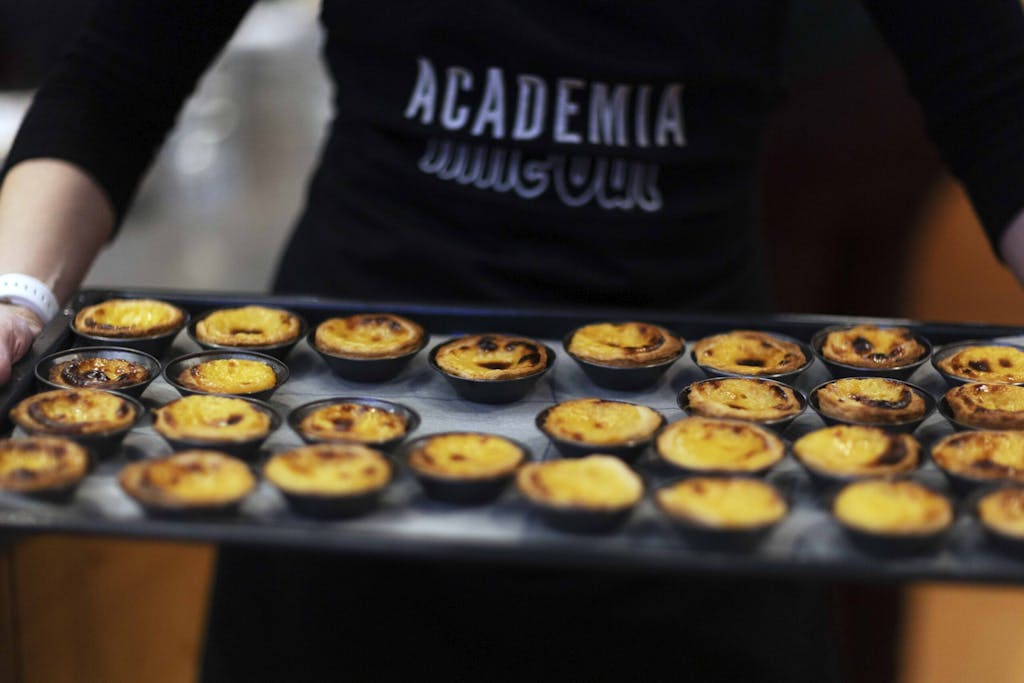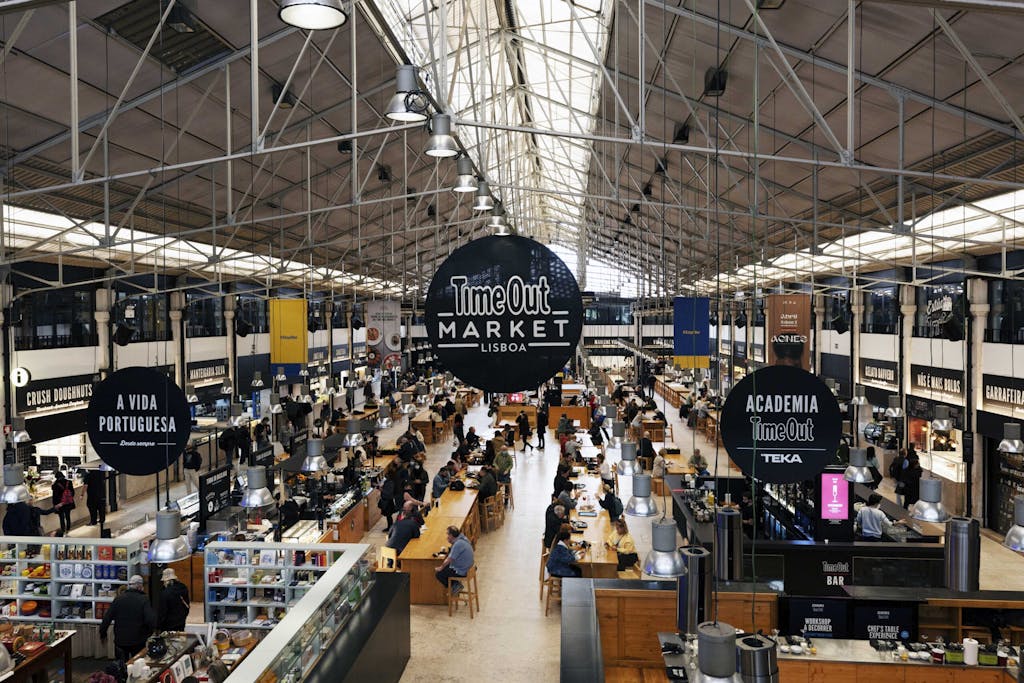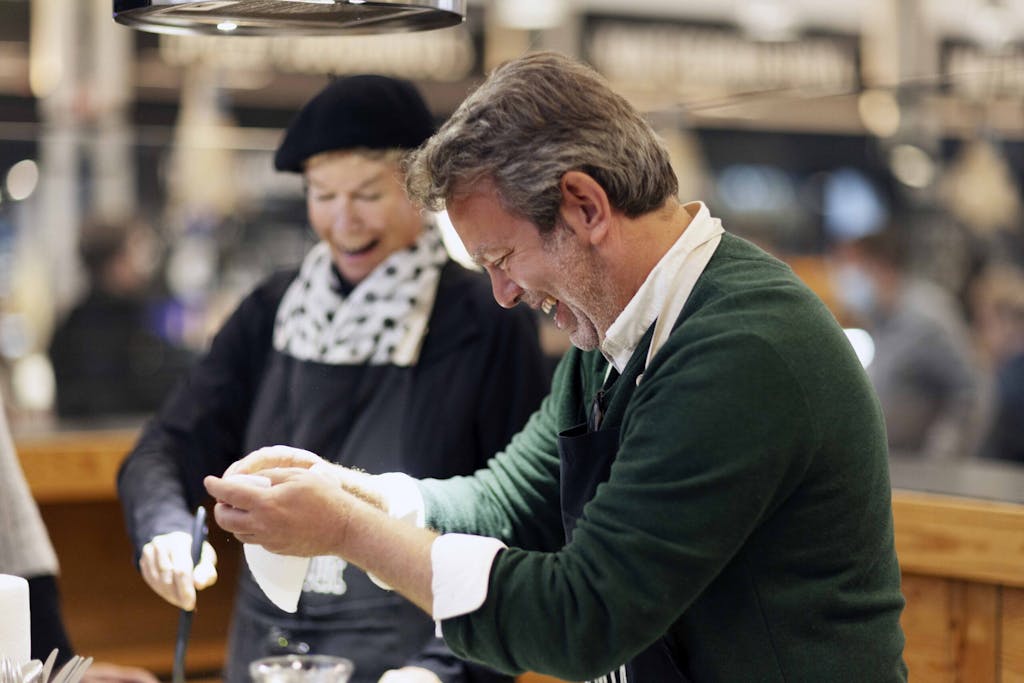Road Test, S.A.L.T. Experiences: In Portugal, Create the Classic Pastel de Nata
In 1982, Maria de Lourdes Modesto, Portugal’s Julia Child, described the pastel de nata in her essential cookbook “Traditional Portuguese Cooking” as follows: “These pastries are probably the most important Portuguese speciality ever sold.” Fast forward to today, almost four decades after Modesto’s book was released, pastel de nata is, indeed, the ultimate national symbol of Portugal.
The tart’s ingredients are very simple: a puff pastry filled with a custard made of cream, egg yolks, sugar, flour and lemon zest. Today’s tart recipes — which Silversea guests can learn about on a S.A.L.T. shore excursion in Lisbon — are an adaptation of the ones dating back to the 16th century, when these were baked with sugar and egg yolks in monasteries and convents all over the country.

“Sugar was produced in Portugal,” says Cristina Castro, the director of “No Ponto,” a research project with the aim of cataloging Portugal’s sweets, “back when the Moors were here in the 11th century, as well as in colonies, Madeira and Brazil, between the 15th and 17th centuries.” The more the country produced sugar, the more it became available to the Portuguese; as soon as they mixed it with egg yolks, pastry recipes proliferated.
A tradition of sweets
Pastel de nata is the size of a pea in a country with a vast tradition of sweets. Each Portuguese pastry is different in volume, sweetness, and color: palm or king-sized; really sweet or just a little; mostly yellow, brown or white. Their recipes have the same name often, although they can differ in ingredients and techniques between two villages 20 miles apart.
You find pastries, in which pasteis de nata (the plural form) are included, at a pastelaria (or confeitaria), cafés with a glassed counter filled with a vast number of confectionery sweets — and very few savory snacks. A neighborhood pastelaria can have hundreds of different pastries on display: pastel de nata (egg custard), queque (muffin), bola de Berlim (Portuguese doughnuts), xadrez (checkerboard cake), pão de Deus (brioche with coconut on top) and mil-folhas (millefeuille).
And each day, pastelarias bake and sell thousands of pastéis de nata all over the country. The tart’s simplicity, however, does not mean all egg tarts are created equal — the competition for the best tart is fierce.

Origins and secret recipes
Egg tarts, in their modern form, originated at Antiga Confeitaria de Belém in 1837. In Belém, Lisbon’s most touristy neighborhood, one of the longest lines is not for the 16th-century monastery Mosteiro dos Jerónimos, but for the dark blue pastelaria next door. During the day, international and Portuguese tourists queue for hours to buy boxes of egg tarts at the takeaway counter or nab a seat in one of the five massive dining rooms.
Antiga Confeitaria de Belém’s egg tarts are called pastéis de Belém, not pastéis de nata; the name is trademarked, and their original recipe is secret. Only six people alive today know that recipe, including the three master bakers who work behind closed doors at the so-called Secret Atelier.
Other pastelarias that have mushroomed in Lisbon in the last ten years use a variation of the original recipe. Manteigaria, which is best described as an egg tart bar, is just minutes away from Lisbon’s popular shopping area Chiado. The Art Nouveau building, once a butter shop, has only a counter and a kitchen. From eight in the morning until midnight, a mix of tourists and locals eat their egg tarts at the counter, while on the other side of the plexiglass, bakers roll, shape, and fill new tarts.
Every time a new batch comes out of the oven, a bell rings. Manteigaria’s tarts are light with a thin, flaky crust, and the thick cream has the right hint of sweetness.
Further out of Lisbon’s downtown, just a few feet away from the Benfica food market, pastelaria Fim de Século still bakes their egg tarts with an artisanal method. “The recipe has been tweaked and refined; we only use the tart’s simple ingredients and it’s all handmade,” said Carlos Oliveira, a pastry chef who opened Fim de Século two decades ago with his wife, Gabriela. Mr. Oliveira still pounds the butter into the puff pastry by hand, as well as makes and skims sugar syrup that goes in the filling. Each individual tartlet tin is lined with puff pastry and the custard is poured on top of it.

The pastéis de nata are “baked in a very hot oven, 400 C [750 F], for 8 minutes, but because ours is old we need to rotate the tray to cook evenly,” said Oliveira. Out of the oven and still warm, these tarts have a melt-in-the-mouth, fragile, flaky crust with a not-too-sweet custard that is golden brown and darkened in spots.
Portuguese eat sweets at breakfast time, mid-morning, after lunch or in the evening — any time they’re craving a snack. So whether you want to taste delightful pastries, or prefer to spend your entire trip eating different custard tarts in search of your favorite, you can head to a pastelaria, where pastries cost on average one or two euros apiece.
About S.A.L.T.
S.A.L.T. is an immersive culinary program that — through engaging shore excursions that focus on local food culture and hands-on onboard experiences — offers Silversea guests a chance to travel deeper around the world. And the name? That’s simple — S.A.L.T. stands for Sea And Land Taste. Read on for more information about S.A.L.T.
Excited to join a S.A.L.T. Experience in Portugal and perhaps learn to make your own pastel de nata? The program is available on Silversea Mediterranean sailings on Silver Ray, Silver Moon and Silver Dawn.
